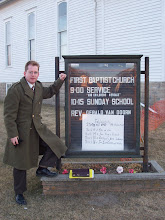Biblical Archeology and Galilee
Intro: Jesus is often referred to as Jesus the Galilean. The Galilee is a region in Israel. Recently, Biblical archeologists have made many significant discoveries in Galilee that illuminate Jewish culture at the time of Christ. Joining us today is Stephen Missick who recently participated in an archeological excavation in Israel.
Tell us about what you were excavating in Israel and how you got there:
I actually won a scholarship with Biblical Archeological Review magazine! In my application I mentioned my military experience, my academic background-and how I wanted to dig in Bethsaida because Jesus was there!
What is Bethsaida? In Aramaic Bethsaida means "House of the Fisherman." It is a fishermen's village not far from the coast of the Sea of Galilee.
How do we know that Jesus was in Bethsaida? Because the Bible says he was! According to the Bible, it was near Bethsaida were Jesus walked on the water. Phillip and Nathaniel were from Bethsaida, as were Peter and Andrew-although they had moved to Capernaum. It is believed that King Herod Phillip was buried in Bethsaida but his tomb hasn't been found yet.
What does the Bible say about Bethsaida? In the Gospels, Jesus rebukes the town of Bethsaida for its lack of faith in him. He also rebuked Capernaum and Chorizen, two other Galilean towns that have been excavated.
What did you find at Bethsaida? The excavations at Bethsaida began in 1987. Since then, they have found a fisherman's house a vine-growers house and roads from the first century that Jesus and the apostles must have walked on. They found a city gate at Bethsaida from a period much older than the time of Jesus. It is believed that this older find is the Kingdom of Geshur-the place where Absalom fled to when he fled from King David his father. While I was digging we find fragments of pottery, coins and scarabs. A scarab is an Egyptian style pendant that was often used as a form of identification.
What is it like to participate in an archeological excavation? Well, its dirty work! I sent most of the day digging and I got covered with dirt! We got to the site at the break of dawn and had breakfast. Then we would get to work. We took a break at about 1130 and continued working until 1 in the afternoon and then we finished for the day.
What kind of insight into the Bible did you gain by participating in an archeological excavation?
Digging is part of the pursuit of knowledge. We dig and then the archeologist take our finds and interpret them. Digging is the slow painstaking work that eventually leads to expanding our knowledge of the Bible and its times. There were two archeological educational parks that I thought were very helpful. One was at Nazareth. It is called "Nazareth Village." It a small area they re-created life as it was in the time of Jesus. They built an authentic first century style synagogue a carpenters shop and other recreations of life as it was at the time of Jesus. There was also a mikveh-which is a type of baptistery for Jewish ritual cleansing. There was another archeological park called "Qatzrin Talmudic Village." It was from a period slightly later than the time of Jesus-but a period in which life was mostly the same. At Qatzrin it was like stepping back in time-and everything was still there-but everyone had stepped out for a moment.
What else did you see in Galilee?
I went to Tiberius a few times. Tiberius was built by Herod Antipas and named in honor of the Emperor Tiberius. Later it became an important center for Judaism. I lived near to Magdala where Mary Magdalene came from. Back in the late 1980s-a boat from the time of Jesus was found on the shore when the coastline receded during a drought. The boat which is called the "Jesus Boat" has been preserved and is on display at Ginnosar-where I stayed during the dig. I also visited Capernaum. Although Jesus was from Nazareth, Capernaum is described as "his city" in the Gospels. Capernaum became the center of Christ's operations. Also, in the 1970s and 1980s Francisan archeologists excavated Saint Peter's house in Capernaum. They built a church with a glass floor over the ruins so you can look down into Peter's house. We also went to Chorizon-where they have a "Seat of Moses" in a synagogue they discovered there. Chorizon was another town Jesus visited and he also rebuked it for its lack of faith.
What else where you able to do in Israel?
Now I have been to Israel once before. The first time I focused on Jerusalem and visited with "Palestinian" Christians. During this visit I was able to worship with Arab Christians in Nazareth. But this time I excavated and traveled in the north. I was able to see the ruins of an Israelite temple at Dan, visited Caesarea Phillipi-where Jesus said, "Who do men say that I am?"
I also went to Tel-Megiddo, the Biblical Armageddon and saw the rabbinic tombs at Beth Shemerim-where the famous Rabbi Gamaliel was buried.
What kind of impact did Galilee have upon you? Now the Sea of Galilee is actually a lake-it is about eight miles across. That means you can see across to the other side wherever you are there. But it is a very beautiful place. It was spiritual and tranquil. I felt that it was a fitting place for Jesus to chose to begin to preach about the Kingdom of God. To me it's a place where there is a connection between God's kingdom and this earth.

No comments:
Post a Comment